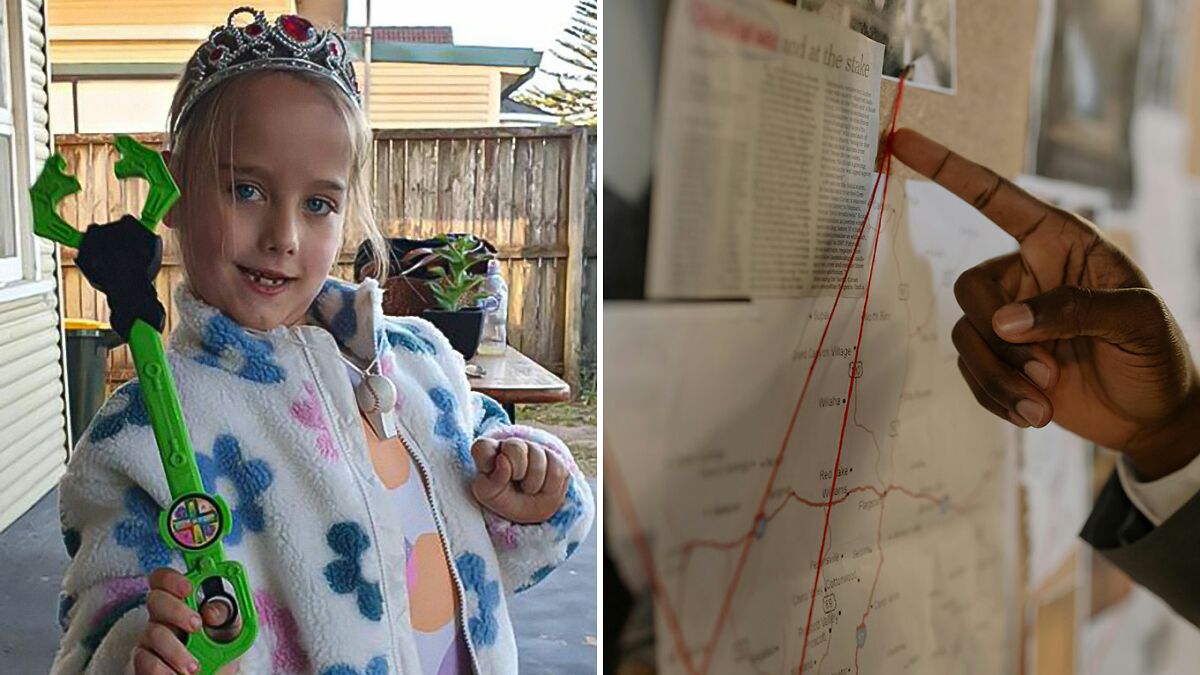
Police Plead For Help Finding 8-Year-Old Girl Missing For 7 Weeks: “Should Not Have Come To This”
The search for missing 8-year-old Molly Noonan-Medley has entered its seventh week.
Authorities have urged the public to remain vigilant as they work to locate the child, who was last seen in Woonona, a suburb south of Sydney, Australia on October 31.
Molly was last spotted around 11 AM on October 31, and since then, she has been the focus of an intensive police investigation.
- Authorities urged the public for help in finding Molly Noonan-Medley, who has been missing since October 31.
- The child is believed to be with an adult she knows, but the woman's identity has not been disclosed.
- Molly is of Caucasian appearance, 120 cm tall, slender build, with blue eyes and blonde-to-brown hair.
- No confirmed information on what Molly was wearing at the time of her disappearance is currently available.
New South Wales (NSW) Police believe that she is in the company of an adult who is familiar to her, though the identity of this individual remains unclear.
8-year-old Molly Noonan-Medley, last spotted on October 31, has been missing for seven weeks
Image credits: cottonbro studio (not the actual photo)
Despite extensive efforts, attempts to reach the adult in question have been unsuccessful.
In a recent statement, NSW Police reissued an urgent appeal for help from the public.
Molly, described as having a Caucasian appearance, stands at about 120 cm tall and has a slender build. She has blue eyes and blonde to brown hair.
As of now, there is no confirmed description of what she might be wearing.
The woman believed to be with Molly is reportedly known to frequent areas such as Woonona, Wollongong, and Huskisson.
Authorities believe she is with an adult known to her, though this person’s identity remains unclear
Image credits: NSW Police Force
The issue of missing children is a global concern, with millions of children reported missing each year.
In the United States, approximately 460,000 children are reported missing annually, according to the National Center for Missing & Exploited Children (NCMEC). However, this figure is likely an underestimation due to factors such as under-reporting and inaccuracies in data collection.
Similarly, in the UK, approximately 112,853 children are reported missing each year. Canada follows closely with 45,288 missing children annually, while in Russia, about 45,000 children are reported missing each year. In India, the figure stands at an estimated 96,000 children going missing annually.
In Australia, the number stands at 20,000 missing children each year, while Spain reports around 20,000 missing children annually.
Molly is of Caucasian appearance, 120 cm tall, with a slender build, blue eyes, and blonde-to-brown hair
Image credits: Ahmet Kurt (not the actual photo)
A decade-long analysis of incidents involving children and unknown offenders, conducted between January 1, 2005, and December 31, 2014, revealed critical patterns and trends related to child abductions and related offenses.
Among the most notable findings, were that the incidents typically occurred during high-risk times such as school hours (7-9am, 3-4pm) or after dinner (6-7pm), with children most often targeted while playing or walking on the street, riding their bikes, or walking to school.
Hands-on force was the most frequently used method of abduction, particularly against the youngest and oldest children, while verbal ploys were more common with elementary and middle school-age children. Notably, children were able to escape or avoid abductions through various means, including using cell phones, fighting back, screaming for help, or an adult intervention.
There is no confirmed information on what Molly was wearing at the time of her disappearance currently available
Image credits: Emily Morter (not the actual photo)
The study emphasized that screaming or making noise significantly increased the chances of an offender’s arrest by drawing attention and prompting adult intervention.
With the internet’s irreversible effect on our lives, social media has become a factor leading to missing child cases in recent years.
Out of all of the victims of online enticement (communicating with a minor via the internet to commit a sexual offense or abduction), 59% were 15 years or younger, NCMEC data revealed.
Children who often become targets of online enticement were likely to have been exposed to some form of endangerment before they went missing, such as mental health, a history of substance abuse, self-harm behaviors, and others.
Netizens hoped officials would soon be able to share some good news related to Molly’s case
Poll Question
Thanks! Check out the results:
1k+views
Share on Facebook
 Dark Mode
Dark Mode 

 No fees, cancel anytime
No fees, cancel anytime 
































































24
0